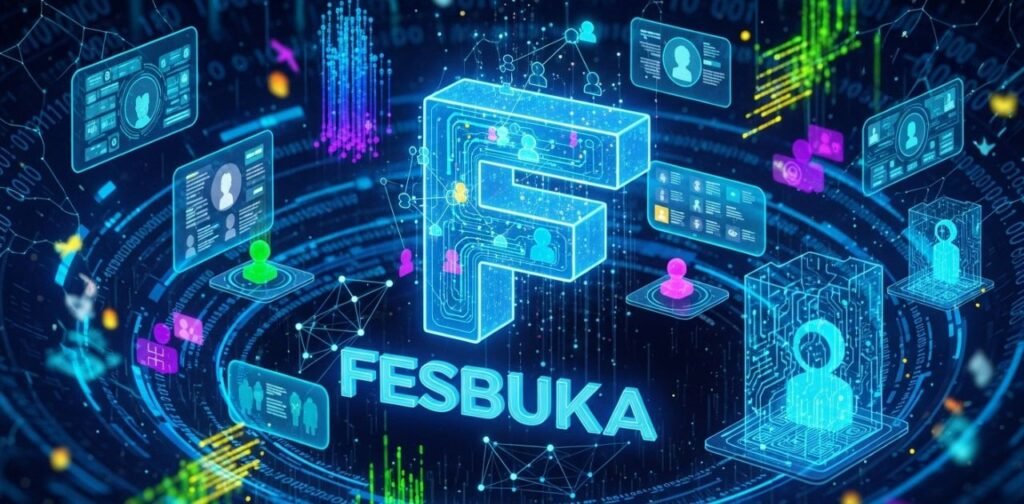What Is Fesbuka? Understanding the Term
The word Fesbuka is widely recognized as a localized spelling of Facebook, one of the largest social media platforms in the world. In many regions, especially where English is not the first language, people adapted the pronunciation and spelling to suit their own linguistic traditions, and “Fesbuka” became a natural alternative. Over time, the term has taken on its own cultural identity, often used in casual conversation to refer to both the platform itself and the act of social networking online.
At its core, Fesbuka is more than just a name—it symbolizes the digital shift in how people interact, communicate, and build relationships. With billions of users worldwide, Facebook (or Fesbuka) has transformed into a global hub of connection, breaking down barriers of geography, language, and culture.
The essence of Fesbuka lies in its accessibility. Unlike many other platforms that remain niche or limited to certain audiences, it appeals to nearly every demographic. Whether it’s family members staying in touch, businesses reaching customers, or communities sharing ideas, Fesbuka has become an everyday part of modern life.
Interestingly, the localized word “Fesbuka” reflects how technology adapts to culture. Just as people shape social platforms, they also reshape their names, making them part of their daily vocabulary. This is a reminder that technology is never separate from society—it evolves with it.
Thus, Fesbuka is not just a digital platform but also a cultural phenomenon, showing how global technology is embraced, adapted, and personalized across communities worldwide.
The Rise of Fesbuka in Social Media Culture
The story of Fesbuka is deeply tied to the rise of social media itself. When Facebook launched in the early 2000s, it was a small platform designed for college students. But in less than two decades, it grew into a global powerhouse with billions of users. This meteoric rise transformed not only how people connect but also how cultures communicate.
In regions where English is not the primary language, people began calling the platform Fesbuka. This adaptation made it feel more natural and easier to use in everyday speech. It wasn’t just about translating a word—it was about making technology part of local culture. As a result, Fesbuka became a household name across different continents.
The cultural impact of Fesbuka cannot be overstated. It redefined friendship, turning online connections into meaningful relationships. Families separated by distance could reconnect, old classmates could find each other, and communities could organize themselves with ease. For many, Fesbuka became the first gateway into the digital world, introducing them to online interaction, messaging, and sharing content.
Moreover, Fesbuka played a key role in shaping digital identity. Profiles became online representations of who people are—complete with pictures, interests, and updates. This blurred the line between real life and digital life, giving people new ways to express themselves while also raising questions about privacy and authenticity.
From a cultural standpoint, Fesbuka democratized communication. Before social media, reaching a large audience required newspapers, TV, or radio. With Fesbuka, anyone could share their voice instantly, influencing conversations and movements around the globe.
In short, the rise of Fesbuka is a reflection of how society embraced the digital age. It symbolizes the merging of technology and culture, where platforms are not only tools but also living parts of community identity.
Fesbuka as a Tool for Connection and Community
One of the most important aspects of Fesbuka is its role as a tool for connection. At a time when the world feels both larger and smaller—globalized yet fragmented—Fesbuka bridges the gap by offering a space where people can stay connected regardless of distance.
For individuals, Fesbuka is a way to maintain personal relationships. Parents can watch their children’s milestones even if they live abroad. Friends can share daily updates, photos, and life events instantly. Communities can create groups around shared interests, from hobbies and education to local activism and business.
For businesses, Fesbuka has become a vital platform for marketing and customer engagement. Small and large companies alike use it to reach audiences, promote products, and build trust with customers. The rise of digital advertising owes much to Fesbuka, which turned online engagement into measurable business success.
Nonprofits and social movements also benefit from Fesbuka’s reach. From disaster relief campaigns to social justice causes, the platform allows communities to mobilize quickly and efficiently. What once required months of planning can now be organized in hours, all thanks to digital connectivity.
The sense of community on Fesbuka is what makes it stand out. It is not just about individual connections but also about collective identity. Whether through groups, pages, or events, people find belonging in shared spaces. This strengthens the idea that Fesbuka is not just a platform—it is a digital ecosystem where communities thrive.
At the same time, this connectivity raises challenges. Issues of misinformation, privacy, and digital dependency have become part of the conversation. Yet, even with these concerns, Fesbuka remains a central hub where billions of lives intersect daily.
Ultimately, Fesbuka’s greatest strength is its ability to create a sense of closeness in a world that often feels distant. It shows that technology, when used meaningfully, can strengthen the bonds that make us human.
Why Fesbuka Still Matters in the Future
In a fast-moving digital world filled with new apps and platforms, some wonder whether Fesbuka will remain relevant. The answer lies in its adaptability and global presence. Despite competition from Instagram, TikTok, and other platforms, Fesbuka continues to hold immense cultural and social weight.
One reason is its universal accessibility. Unlike newer platforms that target specific age groups or niches, Fesbuka appeals to a broad audience. It is just as useful for teenagers as it is for grandparents, making it one of the few truly multigenerational platforms.
Another reason is its integration of services. Fesbuka isn’t just about social networking anymore. It includes messaging, video streaming, e-commerce, gaming, and even professional networking. This multifunctionality makes it a one-stop hub for digital life.
Moreover, Fesbuka remains important for global communication. In many countries, it is still the primary way people access online communities, share news, and stay informed. Its influence in shaping conversations and mobilizing movements is unmatched.
Looking ahead, the future of Fesbuka will likely be tied to innovation and responsibility. As digital life grows more complex, Fesbuka will need to balance connectivity with user safety, privacy, and trust. The platform’s ability to adapt to emerging technologies like AI, VR, and digital commerce will determine how strongly it continues to influence society.
Still, one thing is clear: Fesbuka will remain relevant because it represents more than just a platform. It is a cultural space where people connect, share, and build communities. Its localized name reminds us that technology doesn’t exist in isolation—it evolves with people, languages, and traditions.
Frequently Asked Questions (FAQs)
1. What does the word “Fesbuka” mean?
It is a localized spelling of “Facebook,” commonly used in various languages to make the word easier to pronounce.
2. Why do people use “Fesbuka” instead of “Facebook”?
Because it reflects cultural and linguistic adaptation. People naturally reshape foreign words to fit their language.
3. Is Fesbuka the same as Facebook?
Yes, they refer to the same social media platform, but “Fesbuka” is a regional adaptation of the name.
4. Why is Fesbuka important?
It has become a central platform for global communication, social networking, business, and community building.
5. Can Fesbuka be used for business?
Absolutely. Businesses of all sizes use it for marketing, advertising, and connecting with customers worldwide.
6. What challenges does Fesbuka face?
Issues like misinformation, privacy concerns, and competition from other platforms are ongoing challenges.
7. Will Fesbuka remain popular in the future?
Yes, because of its adaptability, global reach, and ability to integrate new features and services.
8. How does Fesbuka affect culture?
It has reshaped communication, digital identity, and even language, showing how technology adapts to culture.
Conclusion: Fesbuka as a Global Digital Identity
Fesbuka is more than a social media platform—it is a cultural phenomenon that reflects the blending of technology, language, and identity. Its localized name shows how global tools are reshaped by communities to fit everyday life, proving that technology always adapts to culture.
From personal connections to global movements, Fesbuka has played a transformative role in modern society. It connects generations, builds communities, and empowers voices, making it one of the most influential platforms of our time.
Looking ahead, Fesbuka’s legacy will depend on its ability to innovate responsibly. As the world shifts toward AI, VR, and new digital landscapes, Fesbuka must continue to evolve while staying true to its core purpose: bringing people closer together.
In a world that often feels divided, Fesbuka remains a reminder that connection is at the heart of human experience. Whether you call it Facebook or Fesbuka, its impact on culture, identity, and community will continue to shape the digital age for years to come.



